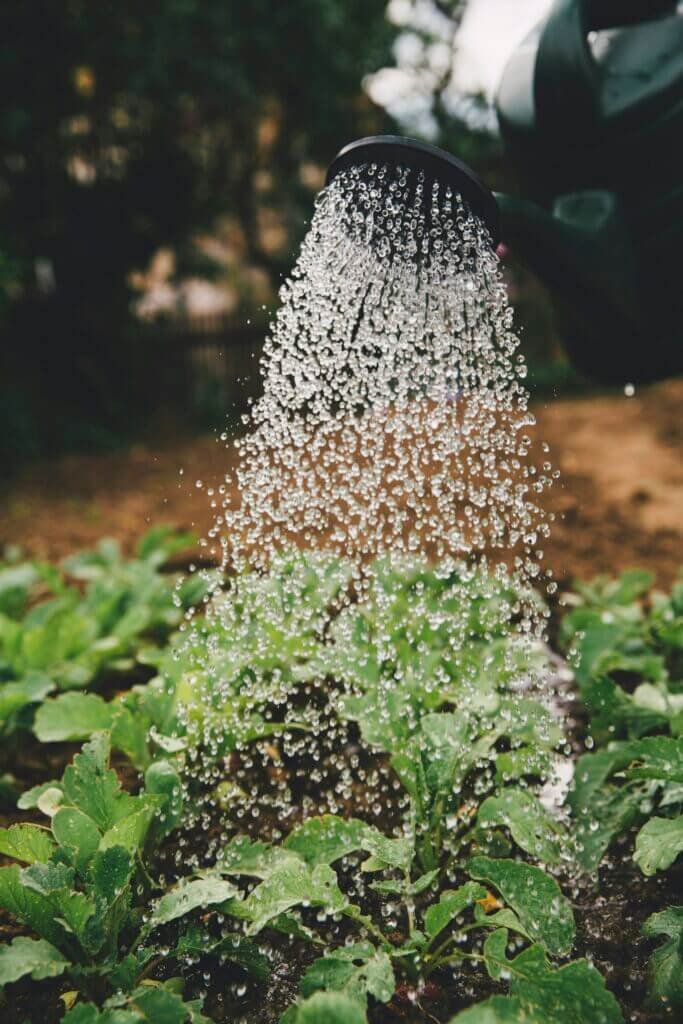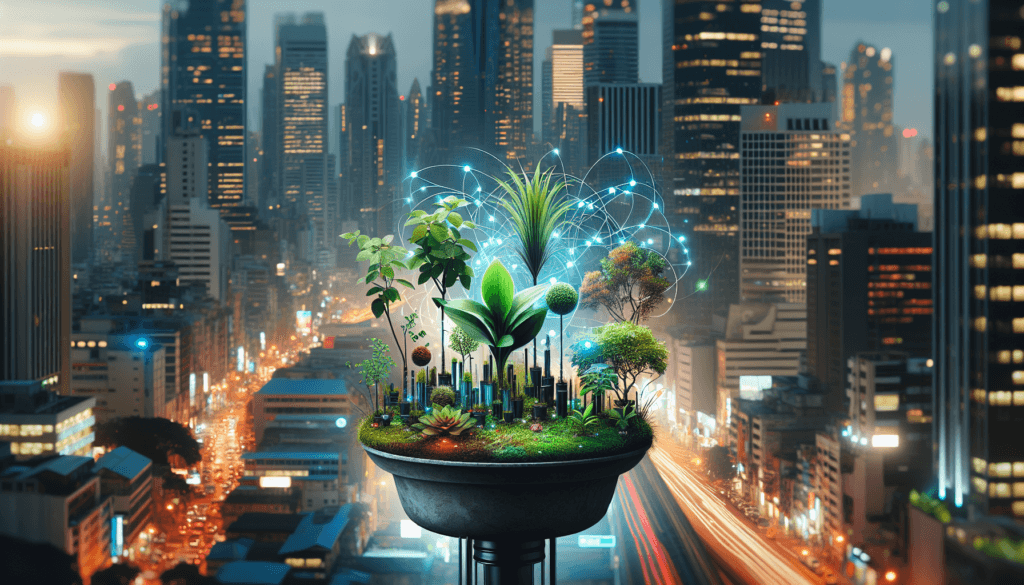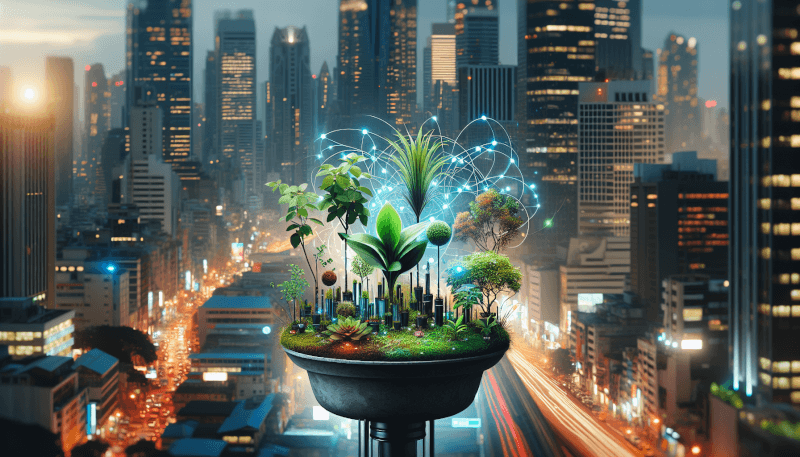Creating your own urban garden is an exciting and rewarding endeavor that allows you to reconnect with nature while enjoying the convenience of city living. But what exactly do you need to get started? From selecting the right plants and containers to ensuring proper sunlight and water supply, this article will take you through the essentials of setting up a flourishing urban garden. With a little bit of planning and a green thumb, you’ll soon be reaping the fresh fruits, vegetables, and flowers of your labor right in the heart of your urban oasis.

Choosing the Right Location
Consider the amount of sunlight
When choosing the location for your urban garden, it’s essential to consider the amount of sunlight the area receives. Most plants require at least six hours of direct sunlight each day to thrive. Observe the area at different times of the day to determine how much sun exposure it receives. Keep in mind that certain plants, such as leafy greens, can tolerate partial shade, while others, like tomatoes or peppers, require full sun. By understanding the sunlight conditions in your chosen area, you can select plants that will thrive in that specific environment.
Evaluate the available space
Another crucial factor to consider when choosing the location for your urban garden is the available space. Assess the area and determine how much space you have to work with. Think about the type of garden you want to create, whether it’s a container garden or raised beds. Take measurements, envision the layout, and consider any potential obstacles like trees or structures that may affect the garden’s growth. Evaluating the available space will help you plan and maximize the use of your urban garden effectively.
Check for nearby water sources
Water is key to a successful urban garden, so it’s important to check for nearby water sources when selecting your garden’s location. Access to water, whether it’s a faucet, hose, or rainwater harvesting system, is crucial for regular watering and irrigation. Consider the proximity of the water source to the garden to ensure ease of use and avoid unnecessary hassle. By having a convenient water source nearby, you can keep your plants hydrated and healthy throughout their growth cycle.
Assess the soil quality
One often overlooked aspect of choosing the right location for your urban garden is assessing the soil quality. The soil plays a vital role in the growth and overall health of your plants. Take a soil sample from the garden area and have it tested to determine its pH level and nutrient content. This will help you understand if any amendments or improvements are necessary for optimal plant growth. If the soil quality is poor, you may need to consider using raised beds or container gardening with high-quality potting soil. Assessing the soil quality will ensure that your plants have the best possible foundation for healthy growth.
Container or Raised Bed Gardening
Selecting suitable containers
Container gardening is an excellent option for urban gardens because it allows you to grow plants in limited space while adding visual appeal and flexibility. When selecting suitable containers, choose those made of materials that provide proper drainage, such as plastic or terracotta pots. Ensure that the containers are large enough to accommodate the root systems of your chosen plants. Additionally, consider the weight of the containers, especially if you’re planning to place them on balconies or rooftops. Lightweight containers made from materials like fiberglass or recycled plastic can be easily moved and are ideal for urban gardening.
Building raised beds
Raised bed gardening is another popular option for urban gardens. It involves constructing elevated planting areas that provide better control over soil quality, moisture retention, and weed prevention. When building raised beds, use materials like untreated wood, bricks, or cinder blocks to create the sides. Ensure that the dimensions of the beds are appropriate for the space you have available and consider the height for ease of maintenance. Raised beds can be a great solution for urban gardeners who want to grow a wide variety of plants in a controlled environment.
Materials needed for raised beds
To build raised beds effectively, you’ll need a few essential materials. Firstly, you’ll need the chosen material for constructing the sides of the raised bed, whether it’s wood, bricks, or cinder blocks. Additionally, you’ll require screws or nails to secure the sides together. A drill or hammer can be handy for assembly. To prevent weed growth, consider adding landscape fabric or cardboard at the bottom of the raised bed before filling it with soil. Finally, high-quality soil or a mixture of soil, compost, and other organic matter is essential to provide a nutrient-rich environment for your plants’ roots.

Essential Tools and Equipment
Hand tools for gardening
Having the right hand tools is essential for maintaining and caring for your urban garden. Some essential hand tools include a trowel for digging small holes or transplanting seedlings, a garden fork for loosening soil, a hand weeder for removing weeds, and pruning shears for trimming plants. Other useful tools include a garden rake, a soil scoop, and a hand cultivator. Investing in good quality, durable hand tools will make your gardening tasks easier and more enjoyable.
Garden gloves and protective gear
When working in your urban garden, it’s important to protect your hands and skin. Garden gloves provide a barrier between your skin and potentially harmful elements like thorns, sharp edges, or insects. Look for sturdy gloves that are both comfortable and flexible. Additionally, consider wearing protective gear like a wide-brimmed hat, sunglasses, and long sleeves to shield yourself from the sun’s rays. Protecting yourself while gardening ensures a safe and enjoyable experience.
Watering cans or hoses
Watering your urban garden is crucial for plant growth and health. Depending on the size of your garden, you can choose between using watering cans or hoses. Watering cans are ideal for smaller gardens and allow for precise watering. Look for cans with a detachable spray nozzle for different watering options. Alternatively, hoses are more suitable for larger gardens as they provide a greater reach. Consider investing in a quality hose with a nozzle attachment that allows you to control water flow and pressure.
Wheelbarrow or garden cart
Transporting materials, plants, and tools in your urban garden can be made easier with a wheelbarrow or garden cart. These tools are especially helpful when working with raised beds or container gardens. A wheelbarrow or garden cart allows you to move heavy bags of soil, compost, or plants, reducing the strain on your body. Look for a wheelbarrow or cart with sturdy construction and a weight capacity that suits your needs. Having a wheeled tool for transporting gardening essentials will save you time and effort.

Plant Selection
Choosing plants based on sunlight requirements
When selecting plants for your urban garden, it’s essential to choose ones that match the sunlight conditions in your chosen location. Read the tags or labels on the plants to determine their sunlight requirements. Some plants, like herbs or leafy greens, can tolerate partial shade, while others, such as tomatoes or peppers, require full sun. Consider the amount of direct sunlight your garden receives throughout the day and choose plants that will thrive in that specific environment. Properly matching plants to their sunlight requirements will ensure healthy growth and abundant harvests.
Opting for compact or dwarf varieties
In urban gardening, space is often limited. To make the most of your available space, opt for compact or dwarf varieties of plants. Compact varieties have been specially bred to take up less space while still producing a high yield. For example, cherry tomatoes or bush beans are excellent choices for small gardens. Dwarf varieties are also beneficial for containers or raised beds, as they have smaller root systems and require less space. By choosing compact or dwarf varieties, you can maximize your urban garden’s productivity without compromising on plant health or quality.
Considering the climate and season
When choosing plants for your urban garden, it’s crucial to consider the climate and the current season. Some plants thrive in specific climates while others may struggle to grow. Research which plants are best suited for your region and the time of year you plan to start your garden. For example, cool-season crops like lettuce or spinach are ideal for spring or fall, while heat-loving plants like tomatoes or peppers should be planted in the warmer months. Considering the climate and season when selecting plants ensures that your garden is well-suited to the natural conditions, leading to better overall success.


